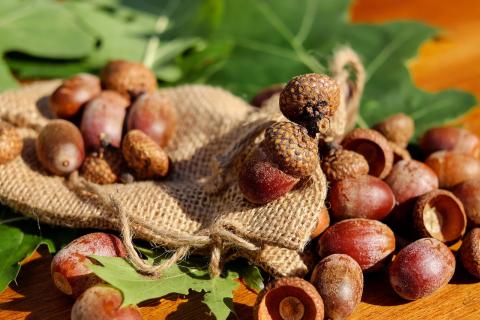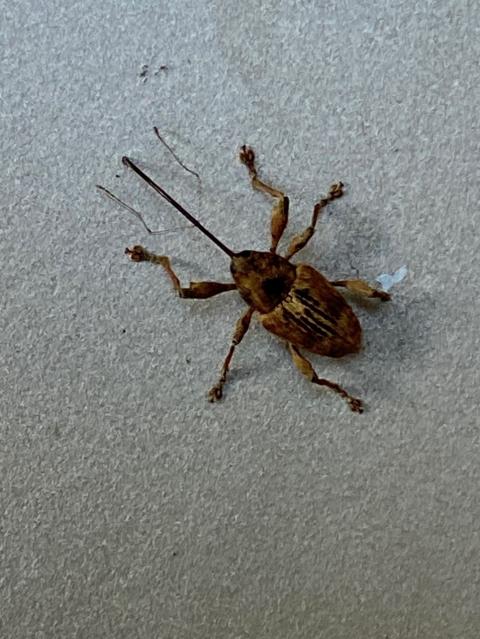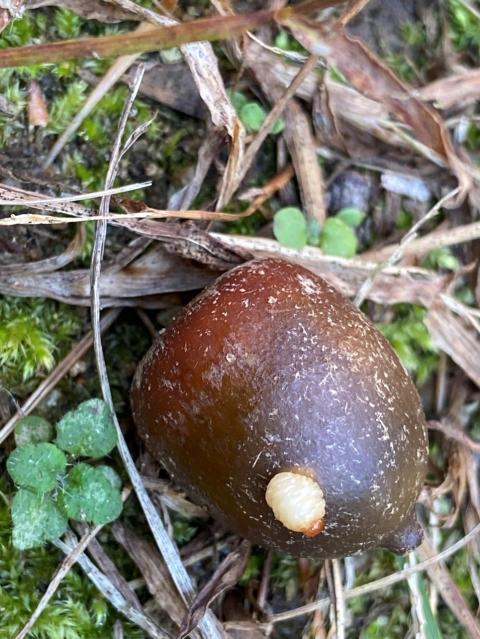Separating the Good from the Bad

Many woodlot owners in New Hampshire are noticing that some species of trees are “masting” this autumn. That is, they are producing large amounts of seed. Around my home in the southeastern part of the state, red oak and white pine are producing bumper crops of acorns and cones, respectively. Foresters and loggers – long waiting for ideal conditions for a regeneration harvest – are scrambling to get projects completed while the seeds are falling. The prospects of securing outstanding regeneration are looking good!
Since I am not overseeing a harvest this autumn, I figured I would take advantage of the great seed year and collect acorns from two outstanding red oaks (Quercus rubra) on my property to grow in pots or donate to the NH State Forest Nursery. Each morning I diligently scoured the ground underneath the two trees collecting acorns before predators – like mice, chipmunks, squirrels, turkey, and deer – beat me to them. I was careful to collect only “ripe” acorns (brown and with an easily removed cap) that did not show signs of damage or infestation by insects such as acorn weevil (Curculio spp.) or acorn pip gall wasp (Callirhytis operator). After collection, I “floated” my acorns in a bucket of water before storing them in my basement. Floating serves as a proxy for determining acorn viability. “Bad” acorns float. “Good” acorns sink.
So, I was a little surprised one morning to find my bucket of “good” acorns teeming with weevil larvae. Maybe this should have been expected, since, waking early one morning in late August to head out to the field, I found my cat suspiciously eyeing an adult weevil in the kitchen. A relatively rare sighting of the mostly nocturnal insect.

Adult weevil (Curculio spp.) with elongated snout and mouth parts known as a ‘rostrum.’
In early to mid-summer, a female acorn weevil uses her elongated mouth parts to chew a tiny hole in a developing acorn. She then deposits a fertilized egg into the hole before covering it up with her feces. The larva then feeds on the interior of the seed until it falls to the ground in the autumn. Once on the ground, the larva chews a small – often perfectly round – exit hole through the side of the acorn and quickly burrows into the soil. The larva overwinters underground (sometimes spending up to two years depending on the species) before pupating and emerging as an adult to repeat the cycle.

Weevil larva (Curculio spp.) emerging from an acorn.
Losses to insects can be significant. A US Forest Service study[1] in Pennsylvania found that only about ¼ to ½ of acorns were sound (viable) when they dropped from the parent tree. Another three-year study[2] in the central hardwood region found losses to acorn weevils as high as 48% and 38% for black (Quercus velutina) and white oak (Quercus alba), respectively. Although my collection methods were far from scientific, after about 10 days in storage, 496 of 811 (61%) acorns had weevil exit holes. Add in losses to seed predators and browsing by herbivores and it is no wonder that regenerating oak in our forests can be challenging.
[1] Marquis, David A.; Eckert, Philip L.; Roach, Benjamin A. 1976. Acorn Weevils, Rodents, and Deer All Contribute to Oak-Regeneration Difficulties in Pennsylvania. Res. Pap. NE-356. Upper Darby, PA: U.S. Department of Agriculture, Forest Service, Northeastern Forest Experiment Station. 5p.
[2] Kenneth F. Kellner, Jeffery K. Riegel, Nathanael I. Lichti, Robert K. Swihart. In: Swihart, Robert K.; Saunders, Michael R.; Kalb, Rebecca A.; Haulton, G. Scott; Michler, Charles H., eds. 2013. The Hardwood Ecosystem Experiment: a framework for studying responses to forest management. Gen. Tech. Rep. NRS-P-108. Newtown Square, PA: U.S. Department of Agriculture, Forest Service, Northern Research Station: 176-190.
If you would like to learn more about promoting oak in your woodlot, check out Ecology and Management of Northern Red Oak in New England or contact your County Forester for assistance.
Have a question about your woods? Contact your Extension County Forester today!
Do you love learning about stuff like this? Subscribe to the NH Woods & Wildlife Newsletter.
A quarterly newsletter providing private woodlot owners in New Hampshire with woodlot management news, pest updates, resources, and more.
